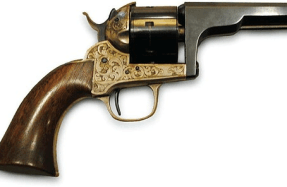STOPPED COLD BY FIRE

They were inexperienced in combat. Most were common laborers in a local rolling mill who had recently left their jobs to defend their workplace, homes, and loved ones. Now they were in an unpaid home guard company defending the world’s longest covered bridge against oncoming Confederates. None wore uniforms, but each of the 53 volunteers had army-issued muskets on hand as they wielded pickaxes and shovels to strengthen the horseshoe-shaped earthworks and rifle-pits surrounding Wrightsville, Pa. They ranged from 15-year-old John Aquilla Wilson to several older men who had seen plenty of sunrises. Some feared they might never see the sunset on this day if the Rebels captured them. All were Black.
It was Sunday, June 28, 1863, and the sight of Black men marching to war against Confederate forces was still new in southern Pennsylvania. Some of the guardsmen had relatives and friends who earlier in the year had left Wrightsville and neighboring Columbia to enlist in the newly organized 54th and 55th Massachusetts Infantry regiments. Unlike their comrades, the men digging trenches were not a formal military unit but volunteers in the home guard company—the only Black unit among five such amateur organizations from towns along the Susquehanna River. They made up in courage and determination for what they lacked in martial training. “They presented a motley appearance, attired as they were in every description of citizens’ dress,” wrote an admiring Lieutenant Francis Wallace of the 27th Pennsylvania Volunteer Militia (PVM), a newspaper editor in civilian life. “They were armed with the old musket altered to the percussion lock.”
The Black company from Columbia, under the command of rolling mill co-owner Captain William Case, was part of a 1,500-man force hastily assembled in the days before the Rebels were due to arrive. Pennsylvania Governor Andrew Curtin, working with the War Department and Maj. Gen. Darius N. Couch of the Department of the Susquehanna, had called for 50,000 volunteers to defend the commonwealth once news arrived that elements of Robert E. Lee’s vaunted Army of Northern Virginia were crossing the Mason-Dixon Line. Couch did not have the authority to enroll Black men into the seven for-pay PVM regiments that were mustered into the service, so the Columbians and York Countians served on
You’re reading a preview, subscribe to read more.
Start your free 30 days





